So I hung a light to help us see.
Which attracted moths, that then attracted mice.
Mice that effortlessly zipped over the vertical surface of the lit granite boulder to nab the moths and munch them down.
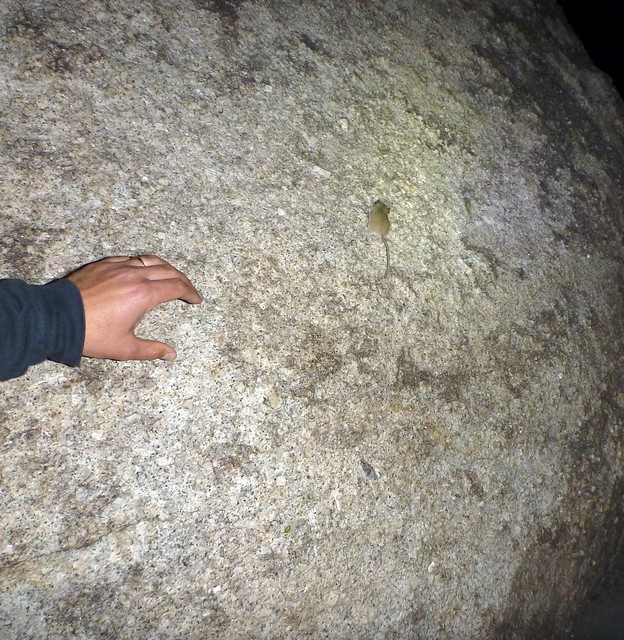
We loved it, of course. It was kind of like having a TV in the desert. Stuck on the Mouse Channel. We nicknamed the mice the "Algernons."
We even considered trapping them, marking them with Sharpies, and letting them go, so we could individually ID them.
"There's Spotty."
"Oooh - here comes Tiger to try and snatch the moth away."
I.e., typical fireside biogeek beer-inspired banter.
But then one of our crew knocked over the salsa. Ouch. And as we began to chide him to clean it up, a moth landed on the chip in his hand. Which he quickly deposited on the salsa tub, proclaiming that now "it was native - moth nachos."

But before we could rebut him, a mouse darted in and took the moth.
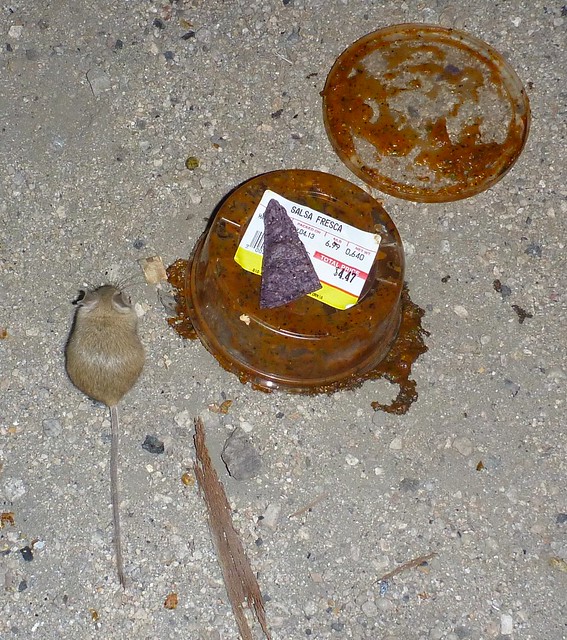
And then quickly came back for the chip, of course, so a salsa clean up soon followed.
At first we thought they might be Brush Mice, Peromyscus boylii. But as we saw them better, we hedged and consulted Jameson and Peeters, which suggested Peromyscus eremicus and Peromyscus crinitus for the area. Two species of deer mice I haven't camera trapped yet.
So, knowing there were interesting and not-shy mice around, I decided to be a bit selective about the scene, choosing a colorful Dudleya as a backdrop for a seed-sprinkled set...
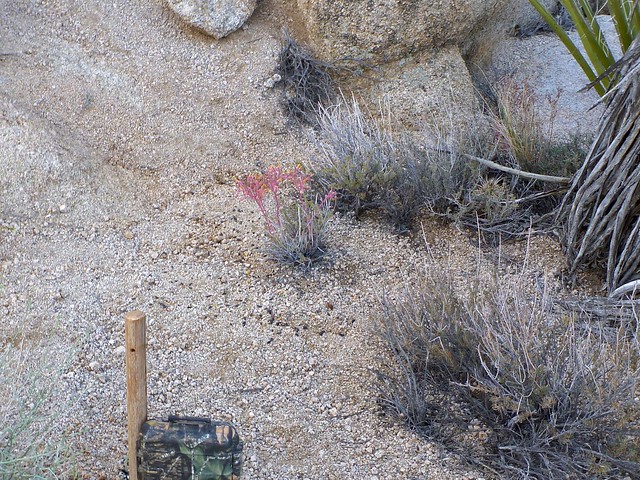
Nicely, the mice behaved, and came out to clean up the seeds. Which allowed for enough pics to conclude they're very likely Peromyscus eremicus, the Cactus Mouse. Also sometimes called the Desert Mouse - "er-emicus" being latin for "of the desert" or even "lonely."
A younger one was first to the scene.
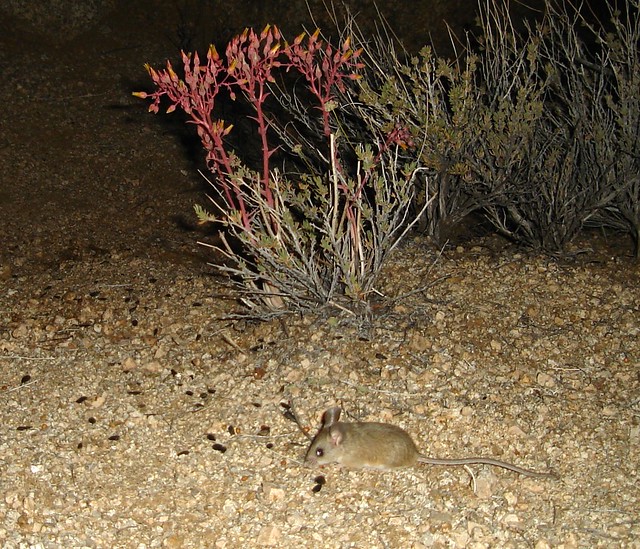
Then a larger, maybe male showed and took over.

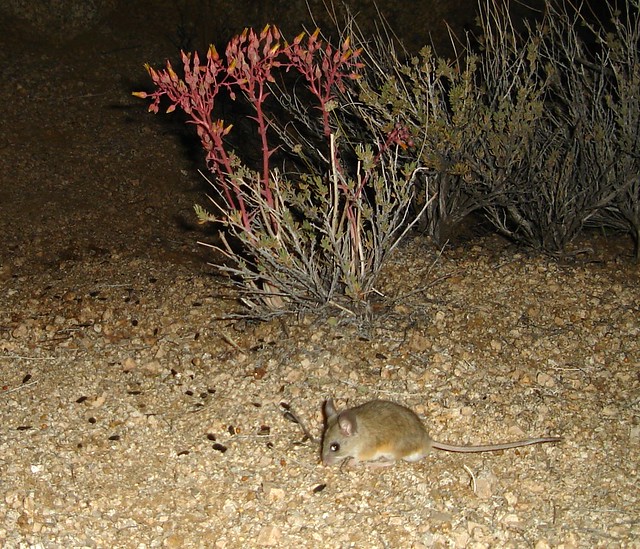
Proportionally, the Dudleya is about 3 times taller than the mouse. So, at our size, it would be equivalent to a small succulent tree, or huge agave, that blooms every year. In your yard.
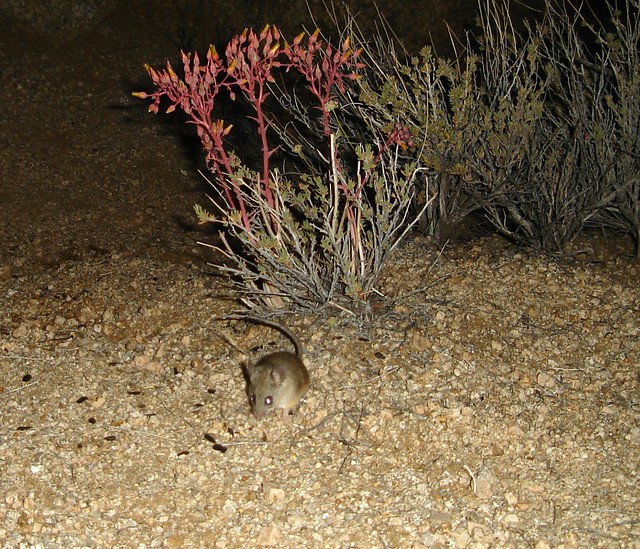
The lonely mice weren't always alone. A ground beetle trundled by:
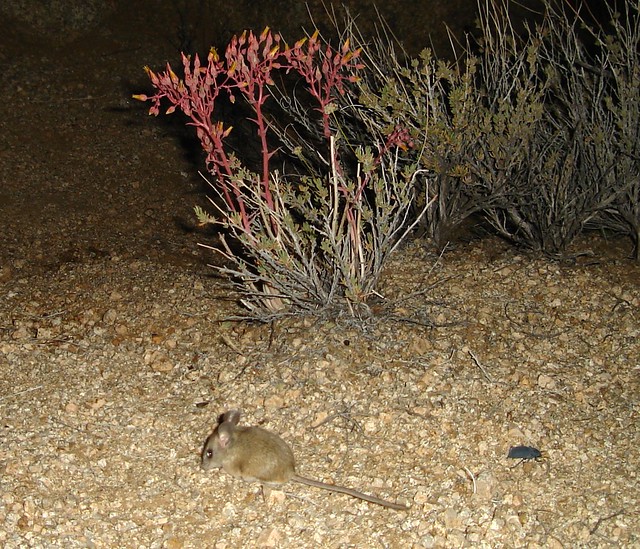
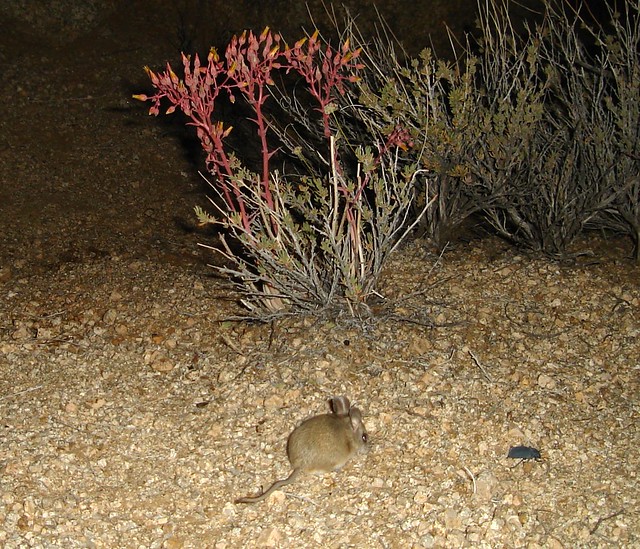
And 2 mice faced off:
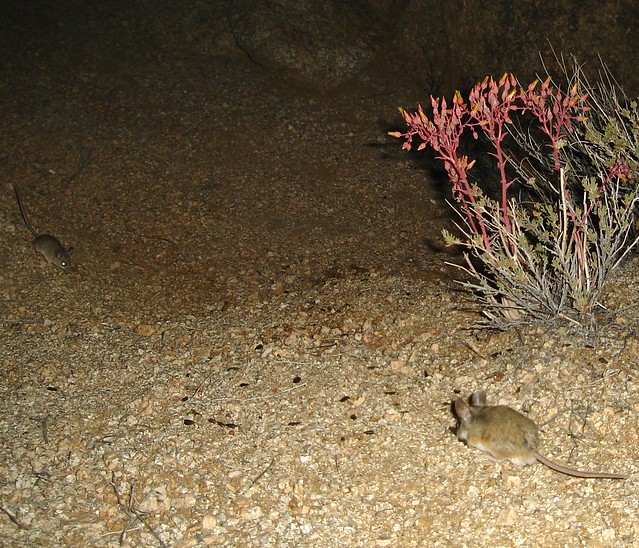
While on the sidelines a grasshopper watched from atop the Dudleyas:
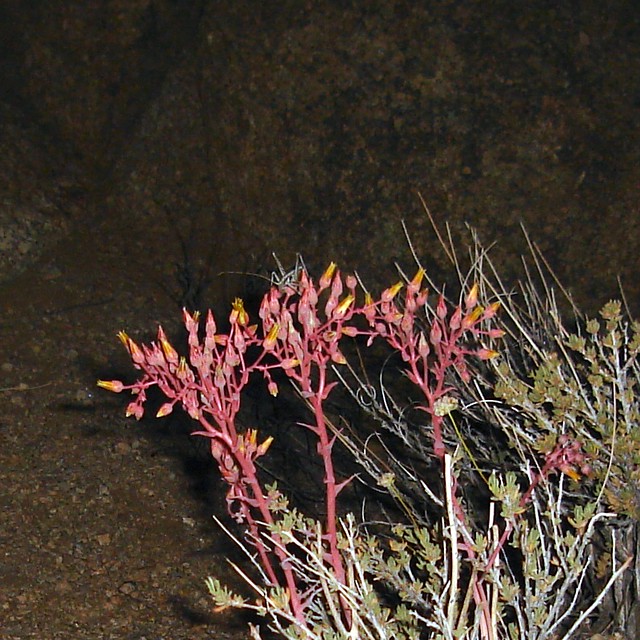
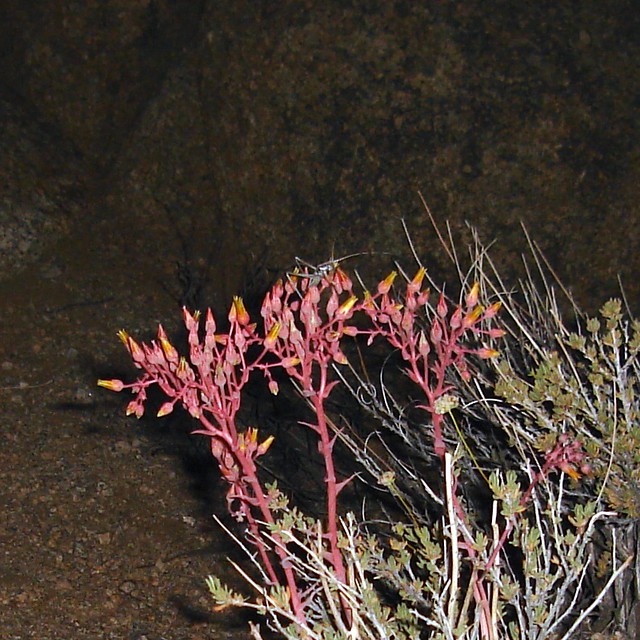
Was it the rare Mohavacris timberlakei, the Desert Long-horned Grasshopper?
Probably not, the orthop-knowing Mr. Smiley informed me - perhaps a nymph of the Sooty Longwing, Capnobotes fuligonosus.
And how about those Dudleyas? They're Desert Liveforever, Dudleya saxosa ssp. aloides.
And darn amazing.
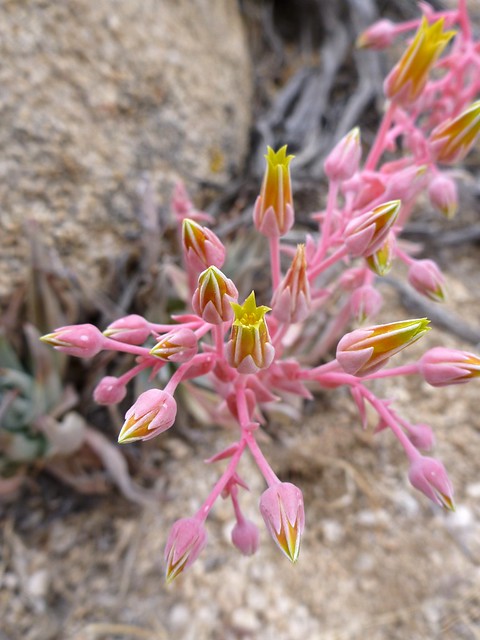
Like most things I've seen in the Mojave.
====
References:
- E. W. Jameson Jr. and Hans J. Peeters - Mammals of California
- Wikipedia - Peromyscus
- Smithsonian Museum of Natural History - Cactus Mouse
- calflora.org - Dudleya saxosa ssp. aloides
- Bug Guide - Mohavacris timberlakei
- Bug Guide - Capnobotes fuligonosus
==========

You are capable of making a nice story out of a small rodent. How funny that they were eating moths! One doesn't really associate mice with eating moths. But I guess in the desert, you have to eat what and when you can!
ReplyDeleteYou are KILLING ME!
ReplyDeleteDid my thesis on Peromyscus (different species, in coastal sage scrub), became OBSESSED with Dudleya when working at a coastal NPS site (so IF I had to name a favorite plant from there, it'd be Dudleya pulverulenta--when it blooms, I faint), showed a SUPER cute vignette of salsa spill to chip to moth to mousie, Mouse TV (sounds like heaven), providing the etymology of the species name (am word nerd), and using trundling re: beetle passage.
And, a cool bug w/long antennae.
Fan-freakin'-tastic. THANK YOU!!! =)
p.s. where would we be w/o Jameson & Peeters?
And so literary too. I didn't realize there was also a Flowers for Algernon book in addition to the short story. Campfire reading material? http://en.wikipedia.org/wiki/Flowers_for_Algernon
DeleteThat set turned out real nice. Nice framing with the little Dudleya. Cute little buggers and a new species to the list.
ReplyDelete